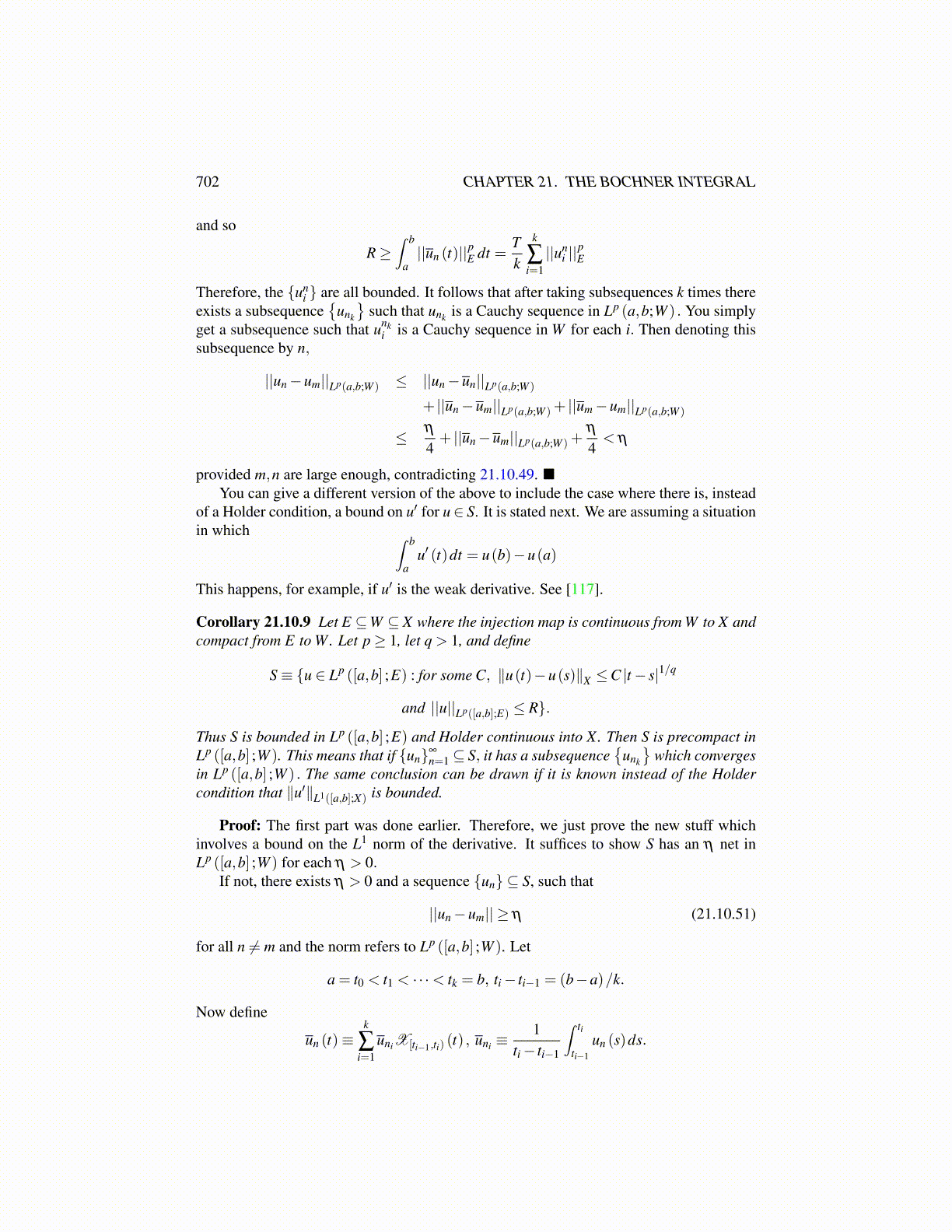
702 CHAPTER 21. THE BOCHNER INTEGRAL
and so
R≥∫ b
a||un (t)||pE dt =
Tk
k
∑i=1||un
i ||pE
Therefore, the {uni } are all bounded. It follows that after taking subsequences k times there
exists a subsequence{
unk
}such that unk is a Cauchy sequence in Lp (a,b;W ) . You simply
get a subsequence such that unki is a Cauchy sequence in W for each i. Then denoting this
subsequence by n,
||un−um||Lp(a,b;W ) ≤ ||un−un||Lp(a,b;W )
+ ||un−um||Lp(a,b;W )+ ||um−um||Lp(a,b;W )
≤ η
4+ ||un−um||Lp(a,b;W )+
η
4< η
provided m,n are large enough, contradicting 21.10.49.You can give a different version of the above to include the case where there is, instead
of a Holder condition, a bound on u′ for u∈ S. It is stated next. We are assuming a situationin which ∫ b
au′ (t)dt = u(b)−u(a)
This happens, for example, if u′ is the weak derivative. See [117].
Corollary 21.10.9 Let E ⊆W ⊆ X where the injection map is continuous from W to X andcompact from E to W. Let p≥ 1, let q > 1, and define
S≡ {u ∈ Lp ([a,b] ;E) : for some C, ∥u(t)−u(s)∥X ≤C |t− s|1/q
and ||u||Lp([a,b];E) ≤ R}.
Thus S is bounded in Lp ([a,b] ;E) and Holder continuous into X. Then S is precompact inLp ([a,b] ;W ). This means that if {un}∞
n=1 ⊆ S, it has a subsequence{
unk
}which converges
in Lp ([a,b] ;W ) . The same conclusion can be drawn if it is known instead of the Holdercondition that ∥u′∥L1([a,b];X) is bounded.
Proof: The first part was done earlier. Therefore, we just prove the new stuff whichinvolves a bound on the L1 norm of the derivative. It suffices to show S has an η net inLp ([a,b] ;W ) for each η > 0.
If not, there exists η > 0 and a sequence {un} ⊆ S, such that
||un−um|| ≥ η (21.10.51)
for all n ̸= m and the norm refers to Lp ([a,b] ;W ). Let
a = t0 < t1 < · · ·< tk = b, ti− ti−1 = (b−a)/k.
Now define
un (t)≡k
∑i=1
uniX[ti−1,ti) (t) , uni ≡1
ti− ti−1
∫ ti
ti−1
un (s)ds.